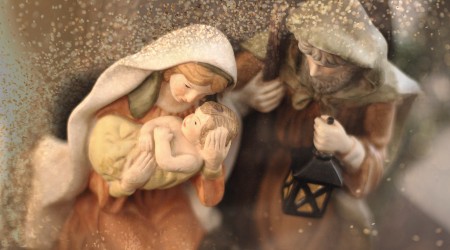 Dear readers, Catholic Online was de-platformed by Shopify for our pro-life beliefs. They shut down our Catholic Online, Catholic Online School, Prayer Candles, and Catholic Online Learning Resources—essential faith tools serving over 1.4 million students and millions of families worldwide. Our founders, now in their 70's, just gave their entire life savings to protect this mission. But fewer than 2% of readers donate. If everyone gave just $5, the cost of a coffee, we could rebuild stronger and keep Catholic education free for all. Stand with us in faith. Thank you. Help Now >
Dear readers, Catholic Online was de-platformed by Shopify for our pro-life beliefs. They shut down our Catholic Online, Catholic Online School, Prayer Candles, and Catholic Online Learning Resources—essential faith tools serving over 1.4 million students and millions of families worldwide. Our founders, now in their 70's, just gave their entire life savings to protect this mission. But fewer than 2% of readers donate. If everyone gave just $5, the cost of a coffee, we could rebuild stronger and keep Catholic education free for all. Stand with us in faith. Thank you. Help Now >
Dromedary drink: Natural healer wants camel's milk available across state lines
FREE Catholic Classes
McClatchy Newspapers (MCT) - There is nothing smooth about a cool glass of camel's milk.
Highlights
The animals aren't cooperative, milk production is less than stellar and it's illegal to sell across state lines.
Still, proponents, led by Millie Hinkle of Pittsboro, N.C., say camel's milk may be an elixir, curing maladies from allergies to autism to diabetes _ although the science behind such claims is thin.
The prospect of a cure-all is what inspires Hinkle, a naturopathic physician who read about the health benefits in a magazine three years ago and decided to lead a national drive for approval of camel's milk in the United States.
"We have great hope for it," Hinkle said, noting that regulatory approval would enable producers to conduct scientific studies and give the milk some bona fides.
Everything hinges on a meeting next month in Florida of the National Conference on Interstate Milk Shipments, which has, for 58 years, created uniform standards across state lines for the production and sale of Grade A milk.
And not just cow's milk.
There's Grade A goat's milk, and sheep's milk, and "hoofed mammals' milk," which covers horses, pigs and even deer, if anyone had a mind to milk deer. As hoofed mammals, water buffalo were approved for milking some years back, thanks to the efforts of a Vermont farmer who established the nation's first water buffalo creamery. There are now three.
"We try to be inclusive," said John A. Beers, chairman of the national milk conference, which meets every two years to update rules for the nation's milk supply. He said no species has been rejected by the group as a milk producer.
On the camel crusade, Hinkle _ who owns none herself _ must present the conference with a proposal to test camel's milk for germs and other adulterations that people don't want to drink. Once there's an established way to assure that camel's milk produced in one state is as safe as camel's milk produced in another, it can be sold across state lines.
Hinkle said that would be a bonanza to owners of the roughly 3,000 camels raised in the United States, mainly for petting zoos and movie appearances.
"A lot are rented out for nativity scenes in December," Hinkle said.
She wants to set up a co-op in Texas, where owners from throughout the United States could pack off their animals during the nine-month period that females produce milk for their calves.
The co-op would ease one of the biggest drawbacks to camel's milk: Females are notoriously cantankerous milkers. They only release milk when they smell their calf, and most will abide milking on just one side _ while her calf is nursing.
"They can kick sideways," Hinkle said. "That could kill you."
But the trouble may be worth it. She says some research abroad has shown health benefits of camel's milk, particularly for children with autism and among people with diabetes. The studies are small, however, and not widely published.
Dr. Barry Popkin, the Carla Smith Chamblee Distinguished Professor of Global Nutrition at the UNC-Chapel Hill School of Public Health, said the health claims for camel's milk are largely unfounded. The drink, Popkin said, is the goji-berry-miracle juice of the moment.
"It's becoming this big exotica in a number of countries," he said, although it is one of the oldest sources of food known to man. Ancient civilizations fermented the beverage, and it has long been a source of cheese and yogurt in desert cultures.
Having sipped it himself _ it's salty and "strange tasting" _ Popkin says camel's milk could be a difficult sell in the United States. Then again, he said, North Africans consider it an aphrodisiac.
"I'm sure there will be a certain cult developed around it," Popkin said. "Just like everything else."
------
MORE ABOUT CAMELS
--There are two types of camels _ dromedary and bactrian. The dromedary has one hump, bactrian two.
--Camels graze on vegetation and are able to extract most the water they need from the plants they eat.
--The hump is comprised of fat, not water, and shrinks during periods without food. Baby camels don't develop a hump until they start eating solid foods.
--Camels are uniquely designed for desert conditions. To keep sand out of their eyes, ears and nose, they have a double row of long, curly eyelashes, a third eyelid to serve as a windshield wiper, small ears with fur inside and nostrils that contract. Their soft feet spread to keep from sinking in sand.
SOURCE: abc.net
___
© 2009, The News & Observer (Raleigh, N.C.).
Join the Movement
When you sign up below, you don't just join an email list - you're joining an entire movement for Free world class Catholic education.

-

-
Mysteries of the Rosary
-
St. Faustina Kowalska
-
Litany of the Blessed Virgin Mary
-
Saint of the Day for Wednesday, Oct 4th, 2023
-
Popular Saints
-
St. Francis of Assisi
-
Bible
-
Female / Women Saints
-
7 Morning Prayers you need to get your day started with God
-
Litany of the Blessed Virgin Mary
Daily Catholic
 Daily Readings for Wednesday, December 25, 2024
Daily Readings for Wednesday, December 25, 2024 St. Eugenia: Saint of the Day for Wednesday, December 25, 2024
St. Eugenia: Saint of the Day for Wednesday, December 25, 2024 Christmas Prayer: Prayer of the Day for Wednesday, December 25, 2024
Christmas Prayer: Prayer of the Day for Wednesday, December 25, 2024- Daily Readings for Tuesday, December 24, 2024
- St. Adele: Saint of the Day for Tuesday, December 24, 2024
- Christmas Prayer: Prayer of the Day for Tuesday, December 24, 2024
![]()
Copyright 2024 Catholic Online. All materials contained on this site, whether written, audible or visual are the exclusive property of Catholic Online and are protected under U.S. and International copyright laws, © Copyright 2024 Catholic Online. Any unauthorized use, without prior written consent of Catholic Online is strictly forbidden and prohibited.
Catholic Online is a Project of Your Catholic Voice Foundation, a Not-for-Profit Corporation. Your Catholic Voice Foundation has been granted a recognition of tax exemption under Section 501(c)(3) of the Internal Revenue Code. Federal Tax Identification Number: 81-0596847. Your gift is tax-deductible as allowed by law.






 Daily Readings for Wednesday, December 25, 2024
Daily Readings for Wednesday, December 25, 2024 St. Eugenia: Saint of the Day for Wednesday, December 25, 2024
St. Eugenia: Saint of the Day for Wednesday, December 25, 2024 Christmas Prayer: Prayer of the Day for Wednesday, December 25, 2024
Christmas Prayer: Prayer of the Day for Wednesday, December 25, 2024

